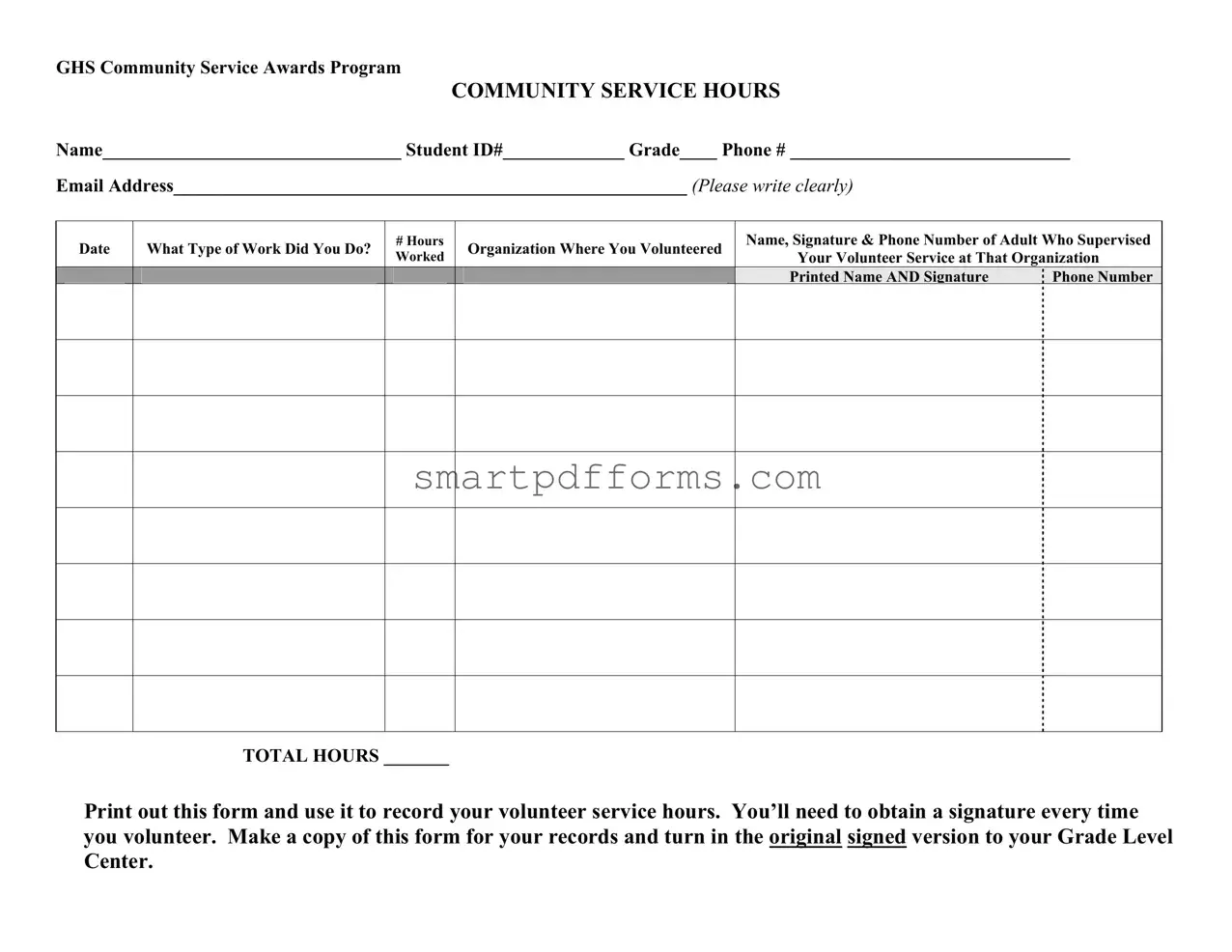In the heart of community engagement lies the principle of service, a principle that schools across the nation strive to instill in their students. Among the tools employed to foster this spirit of volunteerism is the Community Service Form, a simple yet pivotal document that plays a crucial role in the recognition of students' volunteer efforts. The Community Service Form, attributed to the GHS Community Service Awards Program, acts as a bridge between students' altruistic endeavors and institutional acknowledgment of their contributions. It meticulously records a variety of essential pieces of information, including the volunteer's name, student ID, grade, and contact details, alongside the specifics of their service. The form breaks down the volunteer activity into dates, the nature of the work performed, the number of hours dedicated, and the organization that benefited from the service. Crucially, it facilitates a structured and verifiable record of volunteer work by requiring the name, signature, and contact details of an adult supervisor from the organization, thus offering a tangible link between the student's efforts and the beneficiary. This structured approach not only aids in tracking the students' community service but also in validating their contributions for recognition programs. Additionally, by mandating students to retain a copy for their records while submitting the original for verification, it underscores the importance of responsibility and accountability in volunteer work. The effective use of this form underlines a broader educational mission, teaching students not only the value of helping others but also the significance of organizational skills and integrity in their personal development.

